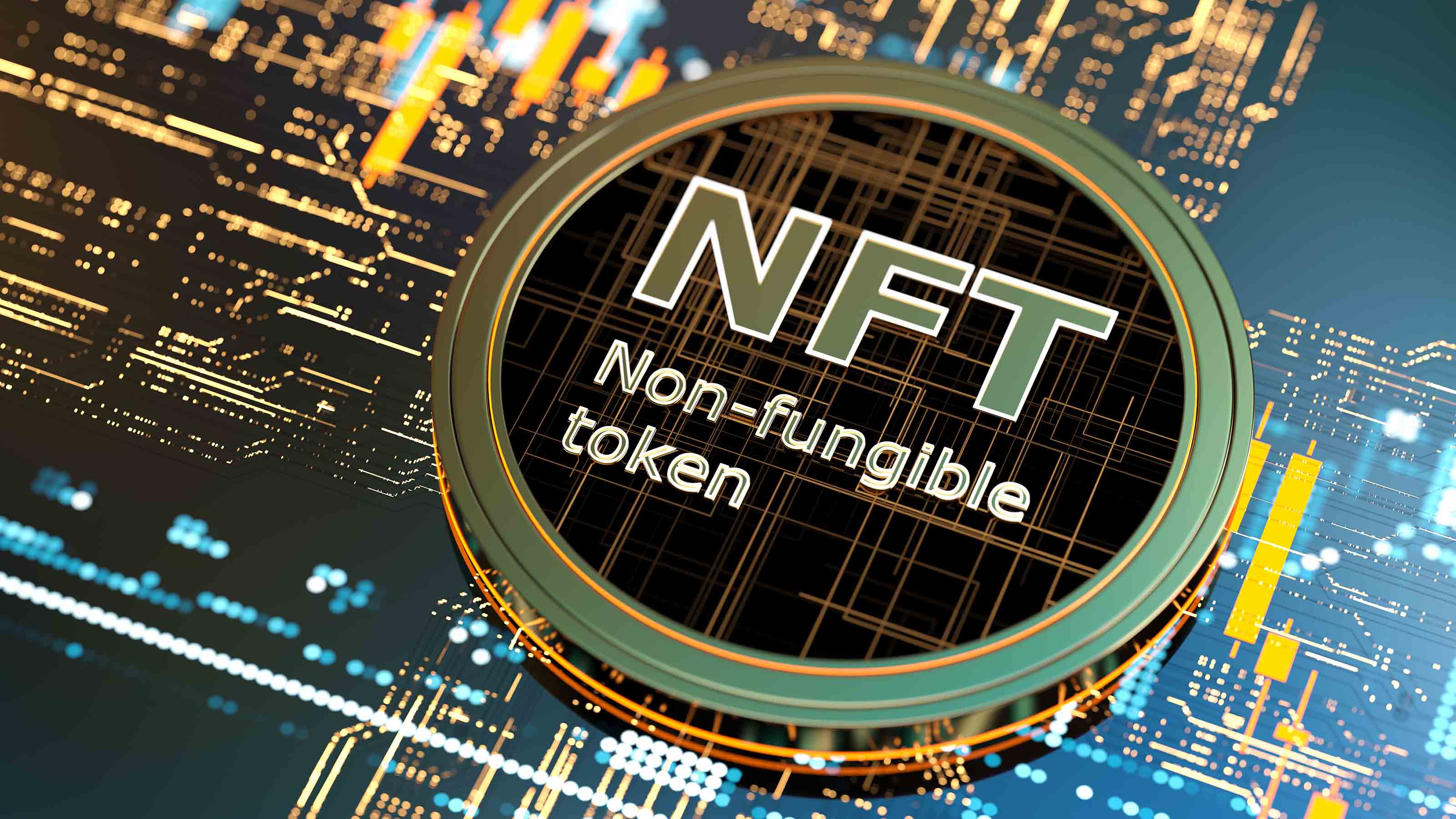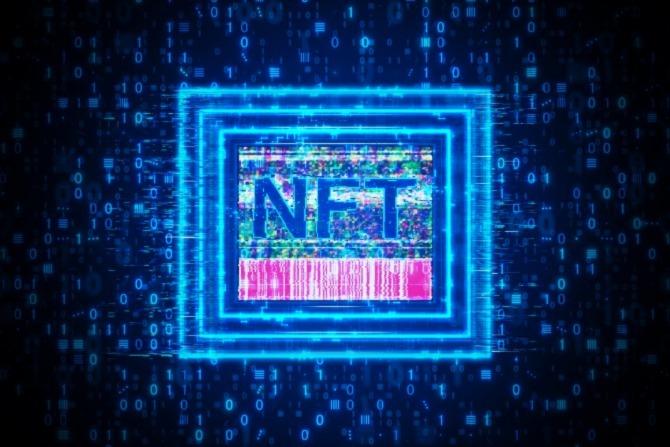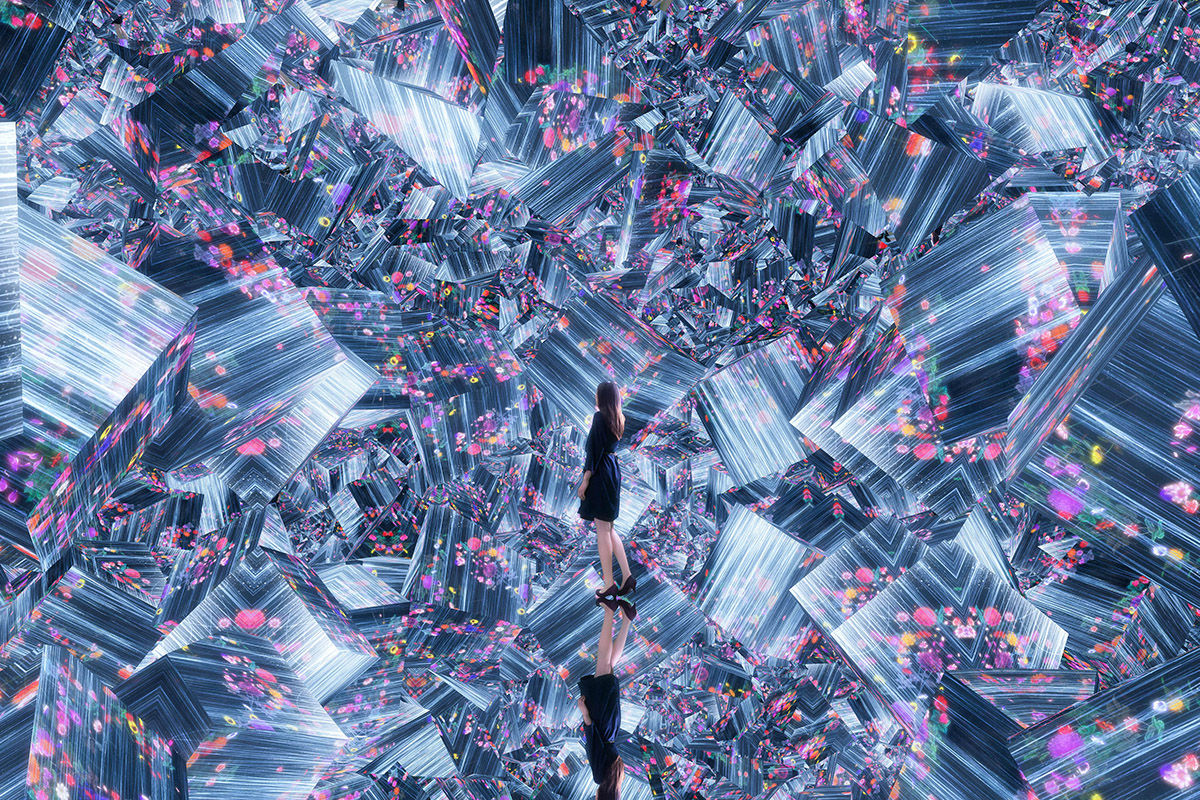The Revolution of NFTs in the Art World: The Rise of Crypto Art
The art world is undergoing a significant transformation fueled by digitization and blockchain technology. One of the most striking examples of this revolution is the emergence of Non-Fungible Tokens (NFTs) and the subsequent rise of crypto art. In this unified piece, we will explore the impact of NFTs on the art world, delving into their mechanisms, the evolution of crypto art, and the challenges and potential of this dynamic space.
1. What are NFTs and How Do They Work?
Non-Fungible Tokens, or NFTs, represent a unique form of digital asset utilizing blockchain technology. Unlike cryptocurrencies such as Bitcoin or Ethereum, which are fungible and interchangeable, NFTs are distinct and indivisible, each carrying a specific value and identity.
At the core of NFT functionality is the blockchain, a decentralized and secure digital ledger. Artists and creators tokenize their work by transforming it into an NFT, essentially creating a digital certificate of ownership. This process involves embedding metadata within the token, detailing information about the digital asset, such as its origin, creator, and any unique characteristics.
Smart contracts, self-executing agreements running on blockchain networks, play a crucial role in NFT transactions. They enable automated processes, such as verifying ownership, facilitating transfers, and ensuring that creators receive a percentage of sales every time the NFT changes hands. NFT ownership is recorded transparently on the blockchain, providing an immutable and publicly accessible ledger. This feature ensures that the provenance of the digital asset can be easily traced, addressing concerns related to authenticity and ownership disputes.
NFT ownership is recorded transparently on the blockchain, providing an immutable and publicly accessible ledger. This feature ensures that the provenance of the digital asset can be easily traced, addressing concerns related to authenticity and ownership disputes.
The ability to represent ownership digitally has led to a paradigm shift in how we perceive and trade digital content. NFTs have found applications beyond art, extending into music, gaming, and various digital collectibles, offering a new frontier for creators to monetize their work and enthusiasts to engage with digital content in a novel way.
2. The Rise of Crypto Art: Digitization of Art and the Role of NFTs
The rise of crypto art signifies a transformative shift in the traditional art landscape, driven by the digitization of creative expressions and the innovative role of Non-Fungible Tokens (NFTs). As art becomes increasingly intertwined with the digital realm, artists are leveraging blockchain technology to redefine ownership and monetization.
Crypto art represents a fusion of artistic creation and cutting-edge technology. Through the tokenization process enabled by NFTs, artists can convert their digital artworks into unique, tradable assets. This process introduces an unprecedented level of scarcity and ownership control in the digital space, addressing longstanding challenges related to digital art piracy and intellectual property rights.
NFTs provide a mechanism for artists to directly monetize their work without traditional intermediaries. Creators can embed specific details about their art within the token, such as provenance, limited editions, or unlockable content. This transparency not only enhances the value proposition for collectors but also establishes a direct and traceable connection between the artist and their audience. The decentralized nature of blockchain ensures that crypto art exists beyond the confines of traditional galleries and auction houses. This democratization of the art market allows emerging artists to gain recognition and compensation for their work on a global scale, while collectors can engage with a diverse array of digital art that might have been overlooked in conventional art circles.
The decentralized nature of blockchain ensures that crypto art exists beyond the confines of traditional galleries and auction houses. This democratization of the art market allows emerging artists to gain recognition and compensation for their work on a global scale, while collectors can engage with a diverse array of digital art that might have been overlooked in conventional art circles.
In essence, the rise of crypto art is not just a technological evolution but a cultural renaissance, challenging established norms and fostering a dynamic ecosystem where creativity and ownership intersect in novel ways. As we navigate this burgeoning space, the role of NFTs in the digitization of art continues to redefine how we create, consume, and appreciate artistic expressions in the 21st century.
3. Renowned Artists and Crypto Art: Opening New Frontiers
Renowned artists, whose names have long been synonymous with the traditional art world, are now venturing into uncharted territories with the adoption of crypto art. This paradigm shift marks a departure from established norms, as celebrated creators embrace blockchain technology and Non-Fungible Tokens (NFTs) to explore new frontiers in the digital realm.
For these established artists, crypto art offers more than just a technological experiment; it represents a profound evolution in the way art is created, shared, and valued. Figures like Beeple have not only embraced NFTs but have also pioneered the path for other artists to follow. Their entry into the crypto art space brings with it a wealth of experience, influence, and a built-in audience that helps legitimize and propel this emerging form of artistic expression.
The appeal for renowned artists lies not only in the potential financial gains but also in the ability to maintain control and ownership over their creations. Through the use of smart contracts and decentralized platforms, artists can ensure fair compensation for their work and maintain a direct relationship with their audience. This direct interaction with collectors and fans fosters a sense of community and appreciation that extends beyond geographical boundaries. The collaboration between celebrated artists and crypto art platforms has a reciprocal impact. While artists bring their established reputation and unique artistic perspectives to the digital forefront, the crypto art space provides them with a platform to experiment, innovate, and connect with a new generation of art enthusiasts.
The collaboration between celebrated artists and crypto art platforms has a reciprocal impact. While artists bring their established reputation and unique artistic perspectives to the digital forefront, the crypto art space provides them with a platform to experiment, innovate, and connect with a new generation of art enthusiasts.
In essence, the involvement of renowned artists in crypto art is not merely a trend; it's a testament to the transformative potential of this digital medium. As these pioneers continue to explore and push boundaries, they play a pivotal role in shaping the future landscape of both art and technology, demonstrating that the fusion of creativity and blockchain has the power to redefine artistic expression for generations to come.
4. Criticisms and Issues: Environmental Footprints and Copyright Concerns
Despite the burgeoning success of crypto art and the adoption of Non-Fungible Tokens (NFTs) by artists and collectors, the industry has not been without its share of criticisms and challenges. Two prominent issues that have come to the forefront are environmental footprints and copyright concerns.
One major criticism revolves around the environmental impact of NFT transactions, particularly those executed on blockchain networks that rely on proof-of-work consensus mechanisms. The energy-intensive nature of these transactions has raised concerns about the carbon footprint associated with minting and trading NFTs. As the demand for crypto art grows, the industry is under increasing pressure to explore and adopt more sustainable blockchain technologies that mitigate the environmental consequences of NFT transactions.
Additionally, copyright concerns have emerged as a significant challenge in the crypto art space. The ease with which digital assets can be tokenized and traded has led to instances of unauthorized use and distribution of copyrighted material. Artists, especially those new to the crypto art scene, may find it challenging to navigate and enforce their intellectual property rights in this decentralized landscape. This raises questions about the need for clearer regulations and mechanisms to protect artists from copyright infringement and ensure fair compensation for their work.
5. The Future: Evolution of Crypto Art and Expectations
The future of crypto art holds the promise of continued evolution and innovation, as this dynamic intersection of art and technology reshapes traditional paradigms. Anticipating the trajectory of crypto art involves considering technological advancements, regulatory developments, and the evolving preferences of artists and collectors.
Technologically, the evolution of blockchain and smart contract capabilities will likely introduce more sophisticated features to crypto art. This could include enhanced programmability, allowing artists to embed dynamic elements into their NFTs or create interactive and evolving digital experiences. Layer 2 scaling solutions may also address environmental concerns by reducing the energy consumption associated with NFT transactions, fostering a more sustainable ecosystem. On the regulatory front, the crypto art space is likely to witness increased attention and formalization. Governments and regulatory bodies may develop clearer guidelines to address copyright issues, intellectual property rights, and the environmental impact of blockchain networks. Such regulations could bring a level of legitimacy to the industry, instilling confidence in both artists and collectors.
On the regulatory front, the crypto art space is likely to witness increased attention and formalization. Governments and regulatory bodies may develop clearer guidelines to address copyright issues, intellectual property rights, and the environmental impact of blockchain networks. Such regulations could bring a level of legitimacy to the industry, instilling confidence in both artists and collectors.
As for artists and collectors, the future holds opportunities for further integration and collaboration. Established artists may continue to explore crypto art as a parallel avenue for expression, while emerging talents find a democratized platform to showcase their work globally. Collectors may increasingly view NFTs not only as unique digital assets but also as a form of patronage, directly supporting artists and participating in the growth of the crypto art community.
Moreover, the integration of virtual and augmented reality technologies may usher in new possibilities, allowing users to experience digital art in immersive environments. This expansion into the metaverse could redefine how audiences engage with and perceive art, pushing the boundaries of creativity and artistic expression.
In essence, the future of crypto art appears to be one of ongoing transformation, driven by advancements in technology, regulatory maturation, and the continuous exploration and adaptation of artists and collectors alike. Embracing this future involves not only anticipating these changes but actively participating in shaping a landscape where digital art and blockchain technology converge to redefine the art world for generations to come.
6. The Growing Popularity of NFTs and Diversifying Use Cases
The rise of Non-Fungible Tokens (NFTs) has been nothing short of meteoric, extending far beyond their initial association with digital art. The popularity of NFTs has reached various sectors, contributing to a paradigm shift in how we perceive ownership and value in the digital realm.
In the music industry, artists are increasingly leveraging NFTs to revolutionize the way they distribute and monetize their work. Musicians can tokenize their albums or exclusive tracks, offering fans a direct and unique connection to their favorite artists. This not only transforms the music consumption experience but also introduces a novel revenue stream for musicians in an industry undergoing constant change.
Gaming has emerged as another fertile ground for NFTs, where in-game assets and collectibles can be tokenized and traded. Players can truly own their virtual items, with the potential for cross-game interoperability, opening up new avenues for the gaming community to engage with digital assets in unprecedented ways. This diversification underscores the versatility of NFTs, transcending their initial association with the art world. Beyond entertainment, NFTs are making inroads into the realm of virtual real estate. Virtual spaces in metaverse platforms, where users can buy, sell, and trade digital land, are gaining popularity. This expansion into virtual real estate not only showcases the adaptability of NFTs but also hints at a future where digital ownership extends beyond individual assets to encompass entire virtual environments.
Beyond entertainment, NFTs are making inroads into the realm of virtual real estate. Virtual spaces in metaverse platforms, where users can buy, sell, and trade digital land, are gaining popularity. This expansion into virtual real estate not only showcases the adaptability of NFTs but also hints at a future where digital ownership extends beyond individual assets to encompass entire virtual environments.
The growing popularity of NFTs and their diversifying use cases underscore a fundamental shift in how we define and interact with digital assets. As NFTs continue to permeate various industries, the concept of true ownership in the digital space is becoming more tangible. This surge in popularity is not just a trend but a testament to the transformative potential of NFTs, reshaping industries and redefining the very nature of ownership in our increasingly digital world.
7. NFTs and the Transformation of Ownership Concepts
Non-Fungible Tokens (NFTs) have emerged as a transformative force, challenging traditional notions of ownership in the digital age. In a world where replicability and digital piracy have long plagued the creative industries, NFTs offer a groundbreaking solution by introducing scarcity and uniqueness to digital assets.
The traditional concept of ownership often revolves around physical possession, a tangible connection to an object or piece of art. However, NFTs redefine ownership in the digital space by providing a decentralized and transparent ledger on the blockchain. Each NFT represents a one-of-a-kind digital asset, whether it be a piece of art, a music track, or a virtual item in a game. This unique tokenization imbues digital assets with a sense of exclusivity and provenance.
Smart contracts, a key component of NFT technology, automate ownership transfers and ensure that creators receive a percentage of sales each time the NFT changes hands. This not only empowers artists to have greater control over their work but also establishes a direct and traceable connection between creators and their audience. The transformation of ownership concepts extends beyond the art world. In the music industry, musicians can now sell albums or exclusive tracks directly to their fans as NFTs, reshaping the relationship between artists and their audience. Similarly, in the gaming industry, NFTs enable true ownership of in-game assets, allowing players to buy, sell, and trade digital items across different games.
The transformation of ownership concepts extends beyond the art world. In the music industry, musicians can now sell albums or exclusive tracks directly to their fans as NFTs, reshaping the relationship between artists and their audience. Similarly, in the gaming industry, NFTs enable true ownership of in-game assets, allowing players to buy, sell, and trade digital items across different games.
As NFTs continue to gain traction, they signify a paradigm shift in how we perceive and value digital ownership. The decentralized, secure, and transparent nature of blockchain technology ensures that NFT ownership is verifiable and tamper-proof. This evolution in ownership concepts not only addresses long-standing challenges in the digital space but also lays the groundwork for a new era where the value of digital assets is intrinsically tied to their uniqueness, authenticity, and the direct relationships they foster between creators and their audiences.
8. Challenges and Criticisms Faced by NFTs
While Non-Fungible Tokens (NFTs) have witnessed a surge in popularity and adoption, they have not been immune to challenges and criticisms. One prominent concern revolves around the environmental impact of NFT transactions, particularly those conducted on blockchain networks using proof-of-work consensus mechanisms. The energy-intensive nature of these networks has sparked debates about the carbon footprint associated with minting and trading NFTs, prompting calls for more sustainable alternatives and eco-friendly blockchain technologies.
Moreover, the hype and speculation surrounding NFTs have led to concerns about market saturation and the potential for a speculative bubble. The volatility of NFT prices and the rapid influx of new projects may pose risks for both artists and collectors. Navigating this uncertain landscape requires careful consideration and due diligence to avoid instances of inflated valuations and potential market corrections.
The challenges faced by NFTs underscore the importance of addressing environmental sustainability, copyright protection, and market stability. As the industry matures, stakeholders are actively exploring solutions, including the adoption of more energy-efficient blockchain technologies, the development of robust copyright protection mechanisms, and efforts to ensure the long-term viability of NFT markets. Addressing these challenges is crucial for the sustainable growth and acceptance of NFTs in the broader digital and artistic landscape.














![[LIVE] Engage2Earn: auspol follower rush](https://cdn.bulbapp.io/frontend/images/c1a761de-5ce9-4e9b-b5b3-dc009e60bfa8/1)







![[ℕ𝕖𝕧𝕖𝕣] 𝕊𝕖𝕝𝕝 𝕐𝕠𝕦𝕣 𝔹𝕚𝕥𝕔𝕠𝕚𝕟 - And Now What.... Pray To The God Of Hopium?](https://cdn.bulbapp.io/frontend/images/79e7827b-c644-4853-b048-a9601a8a8da7/1)










